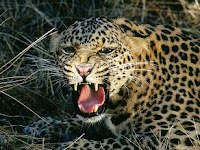Originally distributed January 2009
This is not going to go in chronological order because I need to provide some details on what I was/will be doing on a day to day basis in the field. It’s been a crazy 2wks. Bob McCleery the head professor on the TX A&M group’s trip, runs a boot camp schedule. Up by 5AM, working all day, up until 11PM-12AM and then up again the next morning by 5AM. Day after day. Everyone was exhausted all the time.
Barring that introduction, the TX group was great. They didn’t complain much, they all got along well the whole time and were really motivated. The trip was run by Bob, another professor, and a PhD researcher who had a superiority complex that became a common topic of conversation amongst the others. The students included 5 grad students and 11 undergrads who were all in this short field course together. Their job was to develop mini research projects and figure out the methods for collecting the data. They studied moths, bats, amphibians/reptiles (affectionately referred to as herps in the science world), predators, and game animals.
I was part of the bat crew since that’s what I’ll be doing for several months this year. I also have one volunteer for this month, named Simone, who was out with us in all the chaos. She’s from Germany and is a great sport.
Simone and I headed to the field with my immediate boss, Belinda, and met the TX group at one of the national parks, Mlawula (say M Lawula), where we all camped in tents for a week. For the bat research we set up mist nets and a specialized bat trap called a harp trap (because it kinda looks like a harp). The first night we caught bats and glued radio transmitters on them. I went to bed at 12:30 that night once we were all done. Then I got up at 6AM and I was late! Everyone else was up and ready to go find the bats in their roosts. Schedule-wise, that’s pretty much how the whole 2wks went.
For the week at Mlawula we tracked bats while they were foraging 7-11PM then started at 6AM finding their roost sites all morning. It was interesting. Unfortunately, the bats didn’t stay in the same roost sites everyday. That meant we found bats in a particular tree one morning and the next morning they weren’t there. So we had to track them down elsewhere. And they didn’t all roost together in one place. A few hung out together but the rest were scattered around. We also tracked more than one species so they don’t all use the same kind of roost sites.
Simone and I also got to go out on a couple of game drives. For that you go out after sunset with big spotlights and count the number and species of animals you see by looking for their eye shine. Since this was a well-equiped group from TX they also had a night vision scope and an infrared camera. The goal was to see how many animals you pick up with the infrared vs the spotlight. They figured out people miss 1/3 to ½ of the animals with the spotlight. That info is useful to park managers who want to keep track of animal population sizes in the parks.
There’s a well-known herp expert who joined us at the park for a couple nights to lead herping expeditions. One night the group was so tired several of them didn’t want to go full-on searching for 3hrs. So as we were driving back at night from another location, and after a rain that left puddles everywhere, several of the students agreed to “soft core herping,” which was simply searching for frogs and other critters on the way back to the campground via the car’s headlights.
Now, going back in time, our first day out with the group we went to a neighboring private game park called Hlane (forget about pronunciation). We went on a game drive in the morning and saw a family group of elephants with a 2 wk old baby! It was so cute. I was amazed the adult females let us get so close! We were sitting in the jeep practically in the middle of the herd while they grazed and browsed. Then we went and found a family of hot, sleepy lions. There was an adult male, 3 lionesses and a cub or two hiding in the bushes. We drove right up on them too. They were too hot and tired to respond though.
In the afternoon we went on a game walk there. As far as I recall the ranger didn’t carry a gun. My group encountered a lone bull elephant, but we backed up and kept our distance, a group of hippos and a crocodile in a pool, wildebeest, kudu, impala, waterbuck, nyala, a young leopard tortoise, and a variety of birds. For the animals you don’t know, browse around my photo pages or Google Images. We were looking for rhinos and found evidence of them—footprints, droppings—but no rhinos in the flesh.
In Mlawula, I saw my first zebras and warthogs. All the warthogs have little babies right now, and they’re surprisingly cute! I also saw grey duikers, a genet, baboons, and all the other antelope species listed above. There weren’t any elephants or lions so it was safe to wander around in the dark when tracking the bats.



